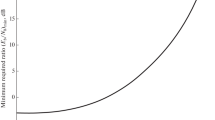Abstract
This paper covers an analysis on the use of a hybrid propulsion system for the Low Earth Orbits to Geostationary Orbit transfer, while addressing issues related to the environment encountered during the orbit raising. This feasibility study is based on the proposal [1] by La Sapienza for a compact and efficient telecommunications satellite, compatible with a launch of the Vega space transport system and characterized by the use of electric propulsion for the orbital transfer. The idea of a Vega compatible telecommunications satellite mission falls within the lines of re-launch of satellite telecommunications programs by the Italian Space Agency with missions already under development and with a view to enhance and strengthen the domestic industry and the systemic capabilities already pride of the country. In addition, the synergy with the Vega launcher, and its potential developments, encourage developments of great interest for the role of Europe in the launch activities, extending its potentials.
Similar content being viewed by others
References
P. Gaudenzi, G. Fanchini, S. Atek, “Feasibility Study of a Vega Launched Low Thrust Geostationary Communication Satellite”, 31st AIAA International Communications Satellite Systems Conference, October 2013
P. Gaudenzi, “High tech small sat missions with air launch capabilities”, Aerotecnica Missili & Spazio, Vol. 90, No. 2–3, June-September 2011
“Vega User’s Manual”, Arianespace, Issue 3, Revision 0, March 2006
“UCS Satellite Database”, www.ucsusa.org, August 2012
“AGI/STK Satellite Database”, www.agi.com/resources, September 2012
G. Maral, M. Bousquet, “Satellite Communications Systems”, John Wiley & Sons, August 2011
M. Nupponen, “Satellite Communications”, 2006
Larson, Wertz, “Space Mission Analysis and Design”, Springer Microcosm Press, 1999
H. Chan, “Balancing Innovation and Heritage Design in Commercial Space”, Innovation Conference for Engineers, Santa Clara, CA, May 19th, 2011
“Electric versus Chemical Propulsion”, Electric Spacecraft Propulsion, ESA, 17 February 2007
“Typical delta V (velocity increment) value(s) for various space manoevres”, Department of Space Engineering, TU Delft, 2012
R. Gubby, J. Evans, “Space environment effects and satellite design”, Journal of Atmospheric and Solar-Terrestrial Physics, Volume 64, Issue 16, November 2002
“STK/Space Environment and Effects Tool (STK/SEET)”, Analytical Graphics Inc.
C. Wiedemann, H. Krag, J. Bendisch, H. Sdunnus, “Analyzing costs of space debris mitigation methods”, Advances in Space Research, Volume 34, Issue 5, 2004
“ECSS-E-ST-10-04C, Space Engineering, Space Environment”, ECSS Secretariat, Requirement & Standards Division, Noordwijk, The Netherlands, 15 November 2008
Landolt-Bornstein, “Detectors for Particles and Radiation”, Springer, Volume 21-B-2, 2011
“Atomic oxygen effects and analysis”, ESA, 2007
“Actual situation in the Geostationary Orbit”, Committee on the Peaceful Uses of Outer Space Scientific and Technical Subcommittee, Forty-ninth session, Vienna, 6–17 February 2012
“European Large Deployable Antenna (12 meter): Development Status and Applications”, IEEEAC, paper #1542, Version 2 Updated January 11, 2007
“4.8 Metre diameter antenna for Galileo spaceprobe”, US Naval Observatory
“TecSAR parabolic deployable umbrella antenna”
“IEEE Std 521”, 2002
C. E. Jordan, “NASA Radiation Belt Models AP-8 and AE-8”, Scientific Report No. 1 GL-TR-89-0267, Radex, Inc., Bedford, MA, September 1989.
“NASA Technical Handbook Avoiding Problems Caused by Spacecraft on-Orbit Internal Charging Effects”, Revalid and Reaffirmed March 2013
J. E. Polk, et al., “Demonstration of the NSTAR ion propulsion system on the Deep Space One mission”, 27th International Electric Propulsion Conference, Pasadena, CA, October 2001
Author information
Authors and Affiliations
Rights and permissions
About this article
Cite this article
Gaudenzi, P., Fanchini, G. & Atek, S. Feasibility Study of a Vega Launched Geostationary Communication Satellite. Aerotec. Missili Spaz. 92, 101–109 (2013). https://doi.org/10.1007/BF03404668
Published:
Issue Date:
DOI: https://doi.org/10.1007/BF03404668




